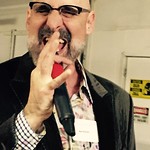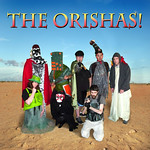Listening to, But Not Hearing, Temple Grandin
Janet Lawson, MFT | June 10, 2015
 “Don’t mollycoddle autistic kids”.* How many times have we sat in an audience with other parents, nodding our heads when Temple Grandin gives this advice? After she speaks, we applaud. We get our pictures taken with her, post them on the refrigerator and on our Facebook page. We even get our children to pose with her and hope they will be as successful as she has been. But have we really heard what she is saying, and do we put her advice into practice?
“Don’t mollycoddle autistic kids”.* How many times have we sat in an audience with other parents, nodding our heads when Temple Grandin gives this advice? After she speaks, we applaud. We get our pictures taken with her, post them on the refrigerator and on our Facebook page. We even get our children to pose with her and hope they will be as successful as she has been. But have we really heard what she is saying, and do we put her advice into practice?
Every program – special ed, vocational, social skills, etc. – will tell you they believe in a strengths-based approach. They want to develop the talents and skills of the individual. However, too many programs shy away from insisting that students take personal responsibility. Too many programs do not ever push students beyond their current limits, and too many programs do not insist students persevere in the face of difficulty. Whether autistic or neuro-typical, in order to grow one must wrestle with obstacles and overcome them.
There are three common responses I hear from ASD students when faced with any difficulty, mistake, or problem:
“It was an accident.”
“I’m doing my best.”
“It’s not my fault (I have autism).”
Instead of teaching a student how to overcome a mistake or a problem, someone carefully taught the student how to say these three things. These three phrases constitute at best an excuse for remaining stuck and performing poorly, and at worst these are a prayer for failure.
“It was an accident.” In the Autistry workshops many things can go wrong. Tools break. Computers stop working. Paint spills. And items get lost. None of these things happen all by themselves (well, maybe the computer malfunction!). But often when a tool breaks a student will look at the tool with astonishment and exclaim, “It’s not my fault. It just happened.”
And, it may seem like it just happened because it occurred outside of their awareness. But does that make it an accident, or is it an unintentional event? There is a difference between an accident and an unintentional event. An accident is generally understood to be an event without an apparent cause. An accident can’t be foreseen or prepared for. There is no culpability in a true accident; no one is responsible for the event. An unintentional event has a known cause but occurs without intent, forethought, or awareness.
As parents, teachers, therapists, and mentors it is our job to help our students broaden their awareness. When we simply accept “it was an accident” as a reasonable explanation for breaking an object, spilling paint, or knocking over a milk container, we implicitly allow them to remain unaware of their surroundings. We prevent them from increasing their abilities.
Mindfulness – focusing on the present moment and becoming more aware of yourself and your surroundings – is an important practice for all people, but for those with ASD it is an essential mindset for becoming truly independent. By making excuses and denying responsibility, we give away our power to change.
Mindfulness also relieves anxiety by giving us back control of our environment. When we understand that if we are aware of the position of the paint can, we are less likely to knock it over, then life seems less random; there is less to fear. And fear, especially fear of the unknown, is at the root of most anxiety.
Temple Grandin: “You have got to keep autistic children engaged with the world. You cannot let them tune out.”
“I’m doing my best.” It is admirable to strive to do one’s best but if one sets the bar too low, “the best” is no longer a meaningful challenge. Change and growth come from breaking through barriers and going beyond your best. Too often “doing my best” is a euphemism for “I don’t want to work any harder.”
We do our students no favors if we applaud a mediocre performance or achievement as if it were stellar. I am a total believer in encouragement and positive reinforcement, but I also believe in a lifetime of raising the bar. If we continue to challenge our students (and ourselves) they will rise to heights greater than we can imagine.
Again, it is our role as mentors to hold high expectations for our students, to believe in their abilities, and to challenge them to take risks. Often we have to confront our own perceptions and assumptions. We must let go our doubts and our fears. There is a popular saying in the disability community: the dignity of risk. By wrapping our students in cotton wool, keeping them safe from all pain, we send them a very clear message that we do not believe in their strengths or abilities. We rob them of the dignity of overcoming obstacles – standing on their own two feet, being independent.
So, the next time a student says “I’m doing my best,” respond with “Great. Now see if you can do even better!”
Temple Grandin: “The thing about being autistic is that you gradually get less and less autistic, because you keep learning, you keep learning how to behave. It’s like being in a play; I’m always in a play.”
“It’s not my fault; I have autism.” The diagnosis of autism may be the reason that some aspects of life are harder, but it should never be an excuse to give up trying. Typical pathways and toolsets may not work for ASD individuals. But that just means we need to find alternative ways to accomplish goals.
One of the best lessons we can give our students is how to problem solve given their personal constraints. Each of us has different strengths and weaknesses, so each of our solutions will be different.
If holding productive focus for long periods of time is an obstacle to finishing a project, then work in smaller time segments. Take breaks that help rejuvenate your focus and reinvigorate your attention. Learn your unique work rhythm and let others know that you get the job done, just in smaller increments.
One of the obstacles for ASD college students is their inherent and real difficulty transitioning from one environment (whether physical or metaphysical) to another. This makes it very hard to take a large number of different classes in a full course load. We have found that when allowed to take just one or two classes, they will do far better.
If sensory input overwhelms you, figure out what works to filter out sound, smells, touch, etc. Many folks find that as they get older their sensory issues diminish. So test yourself periodically rather than assume your level of sensitivity is the same.
By practicing mindfulness we become aware of how our minds and our bodies work. Some people think in pictures and need to draw images to understand concepts. Others use facts to build up solid arguments to support their understanding. And there are those who see patterns and find connections in the world that others do not see.
I have autism is not an excuse – it is a declaration of self.
Temple Grandin: “If I could snap my fingers and become non-autistic, I would not. Autism is part of what I am.”
*mollycoddle: to treat with an excessive degree of indulgence and attention











